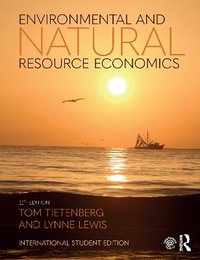This text provides a comprehensive introduction to the important issues of land use and forest economics. The authors employ economic tools to study the allocation of land among alternative activities such as agriculture, grazing and forestry which impact upon the landscape.
The book begins by explaining general economic concepts of well-being, welfare measurement and economic rents before providing a synopsis of various environmental economic issues including non-market valuation, cost-benefit analysis and sustainable development. The authors then move on to address several critical topics relating to land use, the conservation of nature and the protection of agricultural land. These include an analysis of agricultural land use from the perspective of urban expansion and the interface between crop production and nature. They also discuss the economics of public lands, range and ranching, forestry, and global climate change in a comprehensive fashion. Throughout the book, the focus is on enhancing welfare for society as a whole, rather than for particular individuals, interest groups or sectors. In this way, the authors present a balanced and just approach to policy decisions regarding the allocation of scarce land resources.
Accessible and self-contained, this text will become indispensable to postgraduate and undergraduate students on a range of courses including agricultural and environmental economics, geography and resource management. Although primarily a textbook, it will also provide a useful overview for policymakers, range scientists, public land managers and anyone with an interest in the economic evaluation of rural land use and forestry.
Industry Reviews
'The profound contribution of this book is that we find in one place the economic concepts and policy dilemmas pertinent to land-use and to environmental quality. These two aspects are usually treated separately and doing so induces the student to imagine that the way land and forests are used bears no relation to what happens in the water and in the atmosphere. Happily, the integrated approach here shows the importance of these interactions. The book is comprehensive, well written and nicely organized.' -- Daniel W. Bromley, University of Wisconsin, Madison, US
























